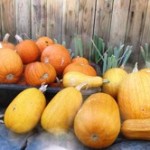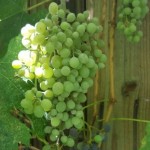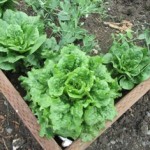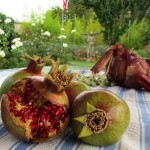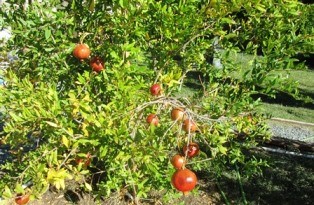The Summer Garden Is Done, What’s Next?
My summer garden is wild and chaotic and bountiful at the beginning of the season. You’ll find fruit trees, vegetables, vines of melons, corn, and perennial lavender and other showy herbs and flowers. Like a grand dame of faded elegance, the garden has matured and looks a bit weary and spent now that Labor Day approaches.
Just because the peak growing season is coming to an end, it’s not the end of garden chores. The following tasks can be started now.
HARVEST AND STORE
For some crops, the harvesting goes on. Examples include tomatoes, potatoes, melons, and winter squashes like Butternut that store well. If you haven’t already harvested the garlic, it’s a good time to do that.
Cut sunflower seed heads and place them in a warm area to dry. Collect seeds from cosmos, nasturtiums, and other flowers to preserve for next year’s garden. Work out storage options, especially for food items to be harvested.
Snip summer table grapes and other varieties if they are ripe . . . or let them hang a while longer for extra sweetness.
CLEAR BEDS
Depleted, dying, or dried annuals can be dug, pulled, and composted now. If you plan to let the garden rest, plant a cover crop so the ground doesn’t become hard scrabble. The cover crop will feed the soil.
DO FALL PLANTING
If you intend to do a fall planting, take time now to enrich the earth with amendments. Turn and rake the garden soil. Put plants directly into the prepared earth and water well to get them off to a good start.
For quick second crop before the weather turns cold, plant greens such as spinach, kale, and arugula. Cool season crops like beets, broccoli, and cabbage can go directly into the ground now, too.
CUT FLOWER AND SEED HEADS
Cut flower heads of hydrangeas for drying. Insert plant markers near peonies and other perennials that will die completely back during winter. Gather bunches of mint and other herbs, tie with string, an hang in a cool, dark place to dry.
CREATE MULCH
Designate an area to create a new compost pile. Use garden detritus and fall leaves as the trees begin to drop their canopies to enter winter dormancy. The resulting mulch will enrich the soil for next year’s garden.
CHECK ON FALL PRODUCE
Pomegranates, persimmons, and pumpkins will soon be ripening. Ensure that these plants continue to get water. Check for pests and any signs that might indicate nutrient deficiencies that could show up in the leaves. Figure out your options for storing or gifting excess fruits and veggies. For example, pomegranates keep well in the fridge or remove the seeds and put into bags for freezing. Save and dry rinds for potpourri.
TURN THE SOIL IN GROW BOXES
Aerate and amend soil in grow boxes and raised beds for cool season crops. Do these chores before the rainy season and cool weather arrives. Your garden, like a young maiden who flourishes from attention, will produce bountiful vegetables, fruits, berries, and flowers during its next growing season.
_______________________________________________________________
If you enjoy reading about farmette topics, gardening, and keeping chickens and honeybees, check out my series of cozy mysteries from Kensington Publishing in New York.
Click on this link: http://tinyurl.com/ya5vhhpm
My newest nonfiction book is published by Adams Media/Simon & Schuster: http://tinyurl.com/y9vfw2t9
- Anyone can find peace, clarity, and focus…all it takes is a moment
To-Do List of Chores for the Fall Garden
From my office widow, I look out over what once was a lush and thriving garden. Not so today.
I can hardly bear to gaze upon the sorrowful, dried tomato vines that for me have come to symbolize the severity of the extreme drought on California gardens.
Now that fall will soon arrive, I’ll toss onto the compost pile those vines along with others from pumpkins and hard-shelled squash.
So with the garden cleared, I’m thinking ahead to next year, ever hopeful we’ll get rain rather than a repeat of dry conditions like this past year.
To ensure the viability of our fruit trees, citrus trees, and various berries through the fall and winter, there is a spray regimen to be initiated. I’ll add it to my long list of chores that will need to be done.
MY FALL CHECKLIST FOR THE GARDEN
Turn the soil, add amendments like compost to hold in the water.
Prepare new beds.
Build cold frames and 4- x 6- foot boxes for new raised beds.
Cut the canes of blackberries (berries only set up on two-year-old canes that won’t again produce; cut to ensure new fruiting canes will take their place).
Prune away the spent floricanes of red raspberries, once they’ve produced fruit.
Clean up around the bases of all trees and evergreen plants; add mulch.
Also remove all leaves at the base of all fruit trees and dispose.
Remove rose leaves after blooming season, cut canes to 18 inches, and spray for diseases and pests.
Stake young trees so they’ll survive windy winters, growing straight and tall.
Treat the trees with an organic spray (one containing copper and protector oil) to prevent fungal disease and pests.
Get out the frost cloth in readiness to cover tender citrus trees.
Prune back the hydrangeas.
Plant fall bulbs for spring flowering.
 Facebook
Facebook Goodreads
Goodreads LinkedIn
LinkedIn Meera Lester
Meera Lester Twitter
Twitter






